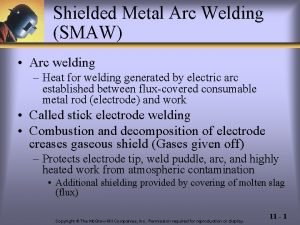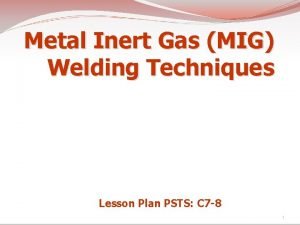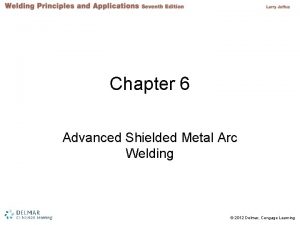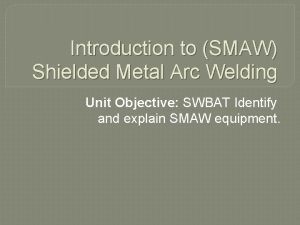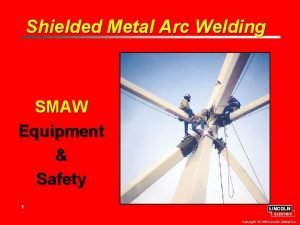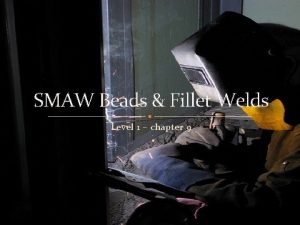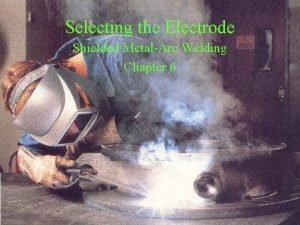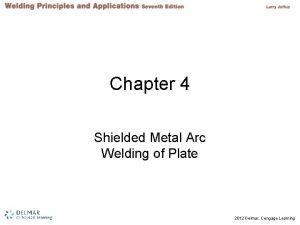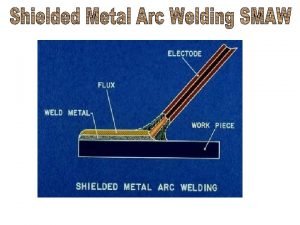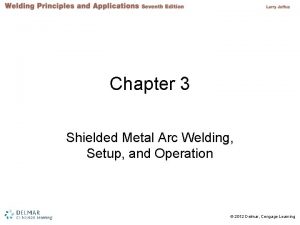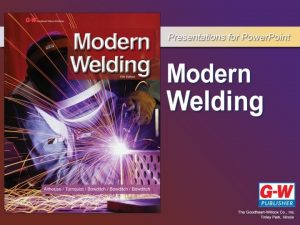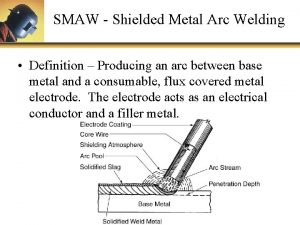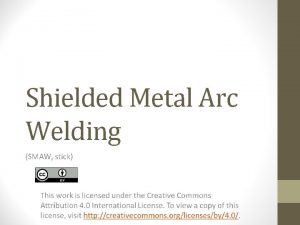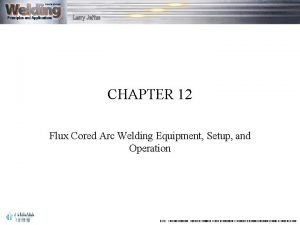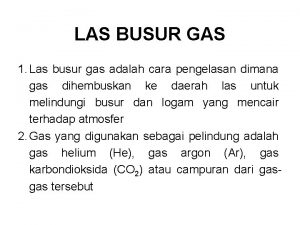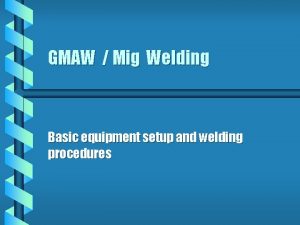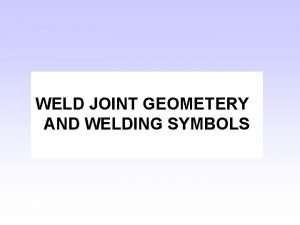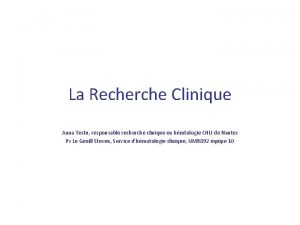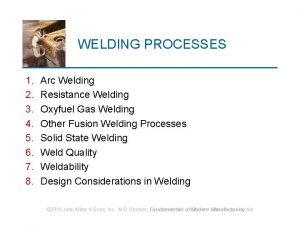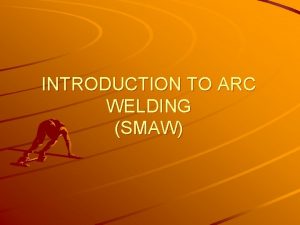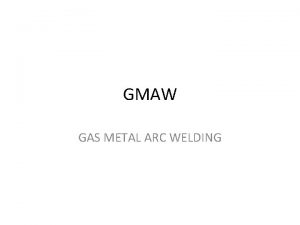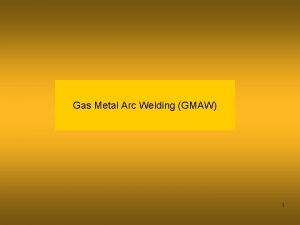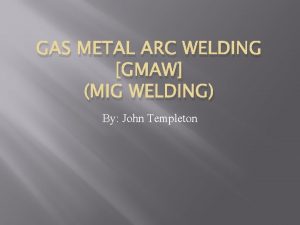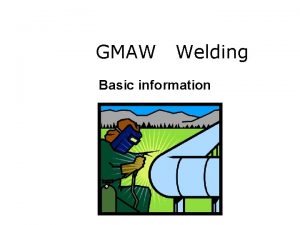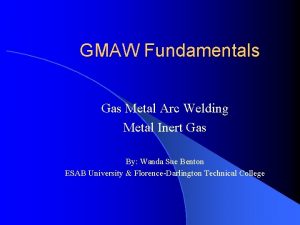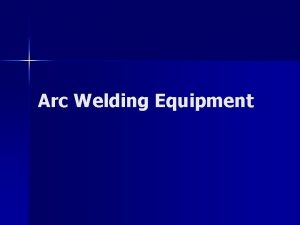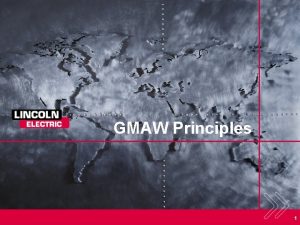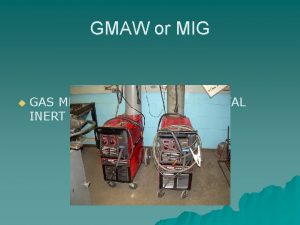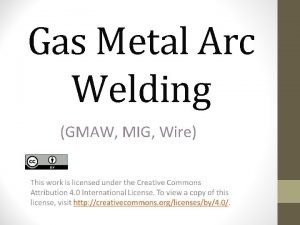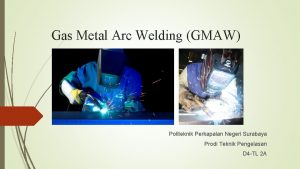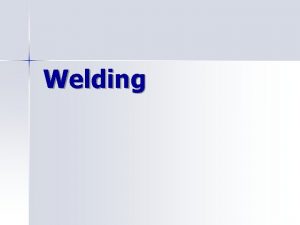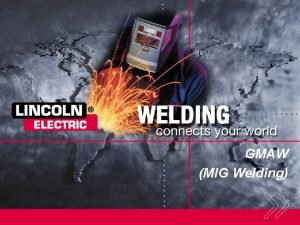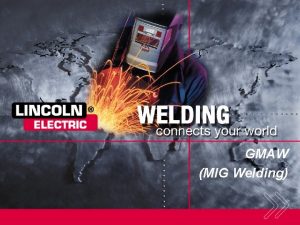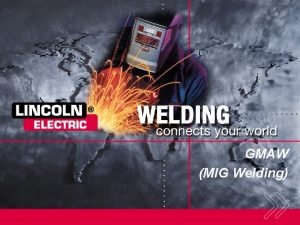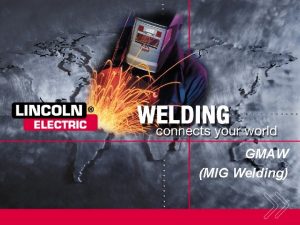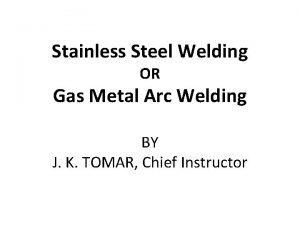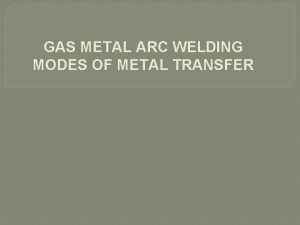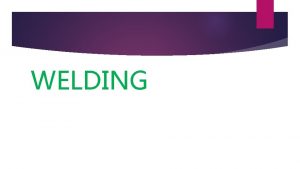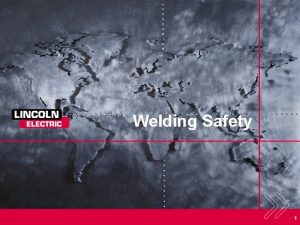GMAW GMAW Gas Metal Arc Welding Definitions Gas
























- Slides: 24

GMAW

GMAW • • Gas Metal Arc Welding


Definitions • Gas Metal Arc Welding • an arc welding process in which a consumable electrode is fed into a weld joint at a controlled rate while a blanket of inert gas shields the weld zone from contamination by the atmosphere. • Also called MIG welding

• FCAW • flux cored arc welding • a form of GMAW with a cored consumable electrode filled with flux

• Short circuit transfer (short arc) • a welding application of the GMAW process where low currents, low voltages, and small diameter wires are used to weld on thin to heavy metal in all positions.

• Spray transfer (spray arc) • a welding process performed in GMAW usually done on thicker metal using larger diameter wires and a shielding gas mixture of Argon with 1 -5% oxygen done in the flat and horizontal positions only.

• Welding current (amperage) • will usually be direct current reverse polarity (DCRP) with the welding wire positive (+) and the work negative. (-)

• Welding voltage (arc length) • the heat generated by the flow of current through the gap between the end of the wire and the work piece.

• Slope • the slant of the voltage versus amps curve, generally referred to as voltage change per 100 amps.

• Slope control • a control of power supply that regulates the amount of pinch of force available on welding wire, thereby controlling spatter or the pinch effect.

• Inductance • controls the rate of rise of current without controlling the final amount of current available. • In short arc welding, the inductance control will increase or decrease the number or short circuit metal transfers per second, from 20 - 200 times per second with an average of 100 times per second, increasing or decreasing the arc on time, thereby making the weld puddle more or less fluid.

• Stick out • the distance from the contact tip of the gun to the end of the wire electrode.

• Whiskers • short lengths of welding wire that feed through the root gap of a groove joint and extend out from the root of the weld in all directions.

• Open circuit voltage • voltage indicated by a voltmeter on GMAW power supply when machine is running but not welding.

• Arc voltage • voltage indicated on by a voltage meter on GMAW power supply when the machine is welding.

• Ferrous • any metal containing iron such as mild steel or stainless steel.

• Non-ferrous • any metal that contains no iron such as aluminum or magnesium.

• Shielding gases • gases, inert or otherwise, used to displace the air around the arc to prevent contamination by oxygen, nitrogen, or hydrogen from the atmosphere.

Advantages of GMAW • Arc always visible to the welder • No slag and a minimum spatter • High deposition rate with 90% of the welding wire being deposited in the joint • Weld metal deposit of low hydrogen quality • Wide range of metal thickness can be welded without changing wire

• excellent for bridging gaps or misaligned joints without burn through • greatly reduced distortion in gage metal • adaptable to weld most any metal by selecting the correct filler wire and shielding gas • adaptive to either automatic or semiautomatic

Disadvantages • • shielding gas susceptible to drafts high initial equipment cost limited portability difficult to use in hard to reach places • operator resistance to radiated heat and arc intensity • lack of fusion with short circuit transfer (cold lapping) • welding equipment is more complex

Major Parts Of GMAW Equipment

Applications of GMAW process • Short circuiting (short arc) • employs low currents, low voltage and small diameter wires. • most popular of the GMAW processes • Spray arc • uses high current, high voltage and larger diameter wires on thicker metals. • Flux cored wire • designed primarily for welding steel • some self-shielded flux cored and solid wire applications utilize DCSP rather than DCRP.
 Advantages of manual metal arc welding
Advantages of manual metal arc welding Mig welding process
Mig welding process Chapter 6 advanced shielded metal arc welding
Chapter 6 advanced shielded metal arc welding Tools in smaw
Tools in smaw Shielded metal arc welding safety
Shielded metal arc welding safety Scratching method of striking an arc
Scratching method of striking an arc Flat position welding
Flat position welding Weaving welding definition
Weaving welding definition Shielded metal arc welding
Shielded metal arc welding Chapter 3 shielded metal arc welding
Chapter 3 shielded metal arc welding The major classifications of welding machines are ____.
The major classifications of welding machines are ____. Lesson 6b shielded metal arc welding fundamentals
Lesson 6b shielded metal arc welding fundamentals Define shielded metal arc welding
Define shielded metal arc welding Shielded metal arc welding definition
Shielded metal arc welding definition What is globular transfer
What is globular transfer Yang dimaksud dengan las busur gas adalah
Yang dimaksud dengan las busur gas adalah Components of gmaw
Components of gmaw Compound welds
Compound welds Minor arc and major arc
Minor arc and major arc Minor a r c
Minor a r c Arc emu88 com arc info 01 100001 html
Arc emu88 com arc info 01 100001 html Arc promoteur vs arc investigateur
Arc promoteur vs arc investigateur Joan of arc heretic
Joan of arc heretic Coalescence welding definition
Coalescence welding definition Arc welding introduction
Arc welding introduction
